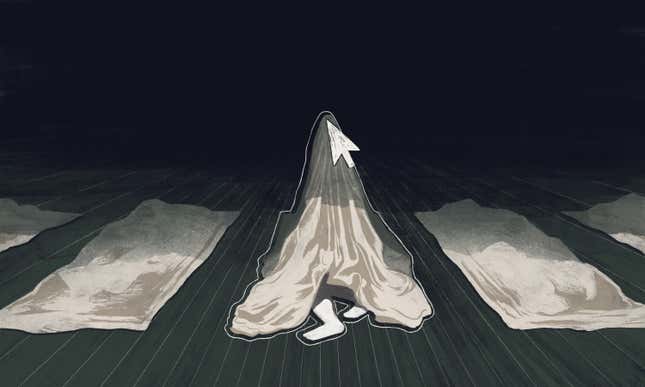The Internet of Dead Girls
Latest

In the industry of internet writing, certain truths become doctrine: Anger is effective, outrage more so, and dead girls and women—particularly those abused and victimized and murdered—rule the attention game. They are the internet’s profane saints and they have always fueled the media, selling newspapers and magazines and generating reliable clicks.
The feminist media is no exception, it relies in a particular way on the traffic generated by the dead girl—the clicks and associated revenue that come with the grisly details of her death, and the outrage and anger of readers. The taxonomy of dead women is different, too; the value of a woman’s body is differently determined on, say, Jezebel, than in tabloids or glossy celebrity-focused magazines.
Tabloids value mothers and children, in particular: JonBenét Ramsey and Jessica Chambers and Laci Peterson; attractive girls and women ready-made for readers to mourn. These girls represent the fictional decay of the American family and the internal dangers that somehow lurk within it; their deaths threaten to decay the family itself.
The feminist hierarchy of the dead women is slightly different. Motivated by ideology disinterested in the preservation of the American suburban family, it’s subsequently less interested in tabloid-ready looks or shocking revelations about husbands or mothers.
Our own dead women, instead, reflect our own values. Death transforms them into sacrifices to a social order we know to be true, one that we hope we can counteract by naming it; we make political sense of their deaths in order to make them seem less senseless. Through news stories of the immortalized dead, we pay witness to particular kinds of violence, to our own suspicions about gender-based crime, to an inherent knowledge that the world is unsafe for women. Anyone who has spent time in or around women’s media recognizes the hierarchy of dead women: women who have been killed by a man wounded by her inattention, women murdered by abusive husbands and boyfriends, women who were executed simply for uttering the word “no.” They are our unholy saints, our martyrs.
I’ve written many of those stories: a post about Caroline Nosal, a Wisconsin woman murdered by a co-worker after she turned down his advances; an unnamed woman who was murdered by a co-worker after she complained about sexual harassment. There are others, too: a three-year-old girl brutalized in retaliation after her mother turned down a man; a teenage girl stabbed to death for rejecting a prom invitation; a mother of three murdered because she refused to give a man her phone number. These stories are valid, they pay witness to the thousands of dead women sacrificed to an invisible, merciless social order.
Over the last decade or so, the feminist internet has built a catalog of dead girls and women; in blog posts, a kind of small hagiography. Collected, they remind us of the tenets of our political religion: that “no” is a dangerous word; that the simple act of rejection—of expressing a preference—can have violent and deadly consequences. These stories are our liturgy, shared with familiar ritualistic language, a sarcastic “just tell him no,” observations about “toxic masculinity,” or a Margaret Atwood quote. It’s a language so familiar that here at Jezebel, that in our own comments section readers will simply type “MA,” a quick reference to the Atwood quote, that they all understand.
That these observations are most loudly made on the feminist internet (itself a thriving zone for women’s otherwise altered speech) seem implicitly to be some sort of argument that things are better than they seem. Even there, women are charged with sexism, their claims of knowledge dismissed (“not all men”) but these dead women are incontrovertible proof, tangible evidence, of violence and its body count.
The dead women of the feminist internet are a silent rejoinder to critics who claim that women’s fears about simple speech are irrational—critics who claim that the public sphere and our national history value the freedom of speech, the freedom to express any opinion, no matter how unpopular. Women understand that they are not yet within the boundaries that delineate acceptable action and speech in the name of safety; if these boundaries exist at all, they are false. The dead pay witness to that falsity; they insist, in their absence, that the violence that results from gendered power hierarchies is not simply a delusion of women.
-

-

-

-

-

-

-

-

-

-

-

-

-

-

-

-

-

-

-

-

-

-

-

-

-

-

-

-

-

-

-

-

-

-

-

-

-

-

-

-








































